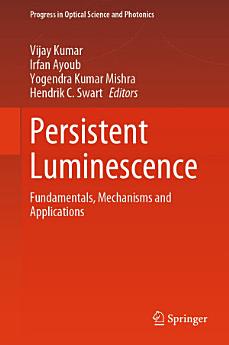Persistent Luminescence: Fundamentals, Mechanisms and Applications
Rreth këtij libri elektronik
Rreth autorit
Dr. Vijay Kumar is working as an assistant professor of Physics at the National Institute of Technology (NIT) in Srinagar (J&K). Before joining NIT Srinagar, he worked as an assistant professor at Chandigarh University, Mohali. He was a postdoctoral researcher at the Phosphor Research Group, University of the Free State, South Africa. He holds a Ph.D. in Physics from SLIET Longowal and an M.Sc. in Physics from the National Institute of Technology Jalandhar, Punjab, India. His research experience and interests lie in the synthesis, processing, and characterization of functional materials, solid-state luminescent materials, bio-based/biodegradable polymers, and composites, drug delivery devices, wastewater treatment, polymer nanocomposites, and ion–solid interaction.
Irfan Ayoub is a senior research fellow in the Department of Physics, National Institute of Technology Srinagar. He is pursuing his Ph.D. in luminescent and optical properties of metal oxides.
Prof. Yogendra Kumar Mishra is a professor MSO at Mads Clausen Institute, University of Southern Denmark (SDU), Sønderborg, Denmark. Prior to joining SDU, he was leading a scientifically independent group at Functional Nanomaterials Chair, Institute for Material Science, Kiel University, Kiel Germany. He completed his habilitation (Dr. habil.) in Materials Science from Kiel University in 2015 and Ph. D. in Physics in 2008 from Inter University Accelerator Centre/Jawaharlal Nehru University, New Delhi, India. His main research focus is ‘Smart Materials’.
Prof. Hendrik C Swart is an Internationally acclaimed researcher and currently a senior professor in the Department of Physics at the University of the Free State, South Africa. He brought luminescence materials to South Africa in the beginning of 1996 after a highly productive sabbatical spent in the lab of Paul Holloway, Florida University, Gainesville. The main focus of his research group is the improvement of luminescent materials for applications in flat panel displays, solar cells, solid-state lighting, dosimetry, and thermometry.









